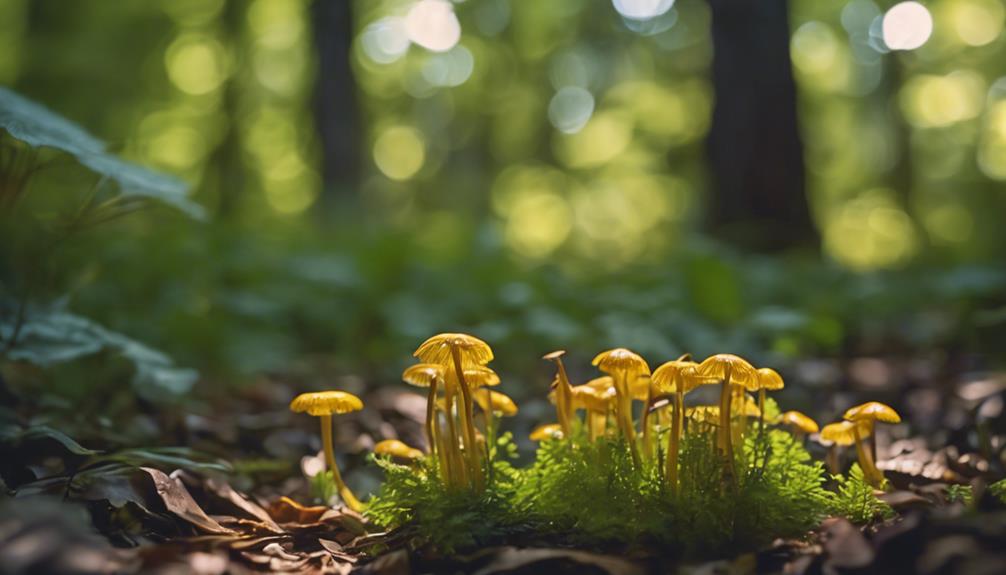Exploring habitats like forests, fields, wetlands, and coasts helps you see how ecosystems function and support different plants and animals. In forests, you discover layered habitats with diverse species, while fields show plant adaptations and animal interactions. Wetlands and coasts reveal water-based ecosystems with specialized wildlife. Experiencing these environments actively deepens your understanding of nature’s interconnectedness and highlights the importance of conservation, encouraging you to explore more about each habitat’s unique role.
Key Takeaways
- Exploring diverse habitats like forests, fields, wetlands, and coasts provides hands-on learning about ecosystem diversity and ecological relationships.
- Each habitat offers unique species and environmental conditions, illustrating habitat-specific adaptations and biodiversity.
- Natural habitats serve as dynamic classrooms for understanding food webs, predator-prey interactions, and ecological resilience.
- Field exploration in different environments fosters appreciation, curiosity, and responsibility for habitat conservation.
- Engaging directly with habitats enhances experiential learning beyond traditional classroom settings.

Have you ever wondered where learning truly takes place? It’s not just confined to classrooms or textbooks; it happens all around you, especially when you step into nature. When you engage in nature exploration, you’re immersing yourself in a world filled with habitat diversity. Each environment offers unique opportunities to observe, discover, and understand the complex relationships that sustain life. Whether wandering through a forest, strolling across a field, or exploring wetlands and coastlines, you’re experiencing firsthand how different habitats support various plants and animals. This direct interaction enhances your understanding far beyond what you can learn from screens or pages alone.
Forests, for example, are rich with lessons about eco-systems’ interconnectedness. As you navigate through towering trees and undergrowth, you witness habitat diversity in action. Each layer of the forest – from the canopy to the forest floor – hosts different species, revealing how diverse life forms coexist and adapt. You notice how animals like birds, insects, and mammals find refuge and food within this complex habitat. By observing these interactions, you learn about predator-prey relationships, food webs, and the importance of biodiversity. Forests serve as dynamic classrooms where every plant and creature contributes to the health of the whole ecosystem.
Fields, on the other hand, teach you about the importance of open spaces and the variety of life they support. As you walk across grassy plains, you see how plants adapt to varying conditions and how insects pollinate flowers, facilitating plant reproduction. Fields showcase habitat diversity through the coexistence of grasses, wildflowers, and small animals like rabbits and insects. These environments demonstrate resilience and the role of different species in maintaining ecological balance. Engaging with fields helps you understand concepts like succession, nutrient cycling, and the significance of preserving open habitats for pollinators and wildlife.
Wetlands and coastlines present uniquely dynamic learning environments. Wetlands, with their mix of water and land, reveal the significance of water ecosystems. You observe how amphibians, birds, aquatic plants, and insects depend on this habitat for breeding, feeding, and shelter. Coastal areas expose you to the interface between land and sea, highlighting the importance of shoreline ecosystems. You see how tide pools teem with marine life, and how coastal vegetation protects inland areas from erosion. These habitats teach you about adaptation to changing conditions, the cycle of tides, and the vital roles wetlands and coasts play in climate regulation and biodiversity.
When you explore these varied habitats, you’re engaging in active learning that deepens your appreciation for nature’s complexity. Each environment offers a different perspective on habitat diversity, helping you grasp the importance of conserving these essential spaces. Your direct experiences in these habitats foster a sense of curiosity and responsibility, encouraging you to protect and preserve the natural world for generations to come.
Frequently Asked Questions
How Do Animals Adapt Differently to Each Habitat?
You can see animals adapt differently to each habitat through habitat-specific adaptations and animal survival strategies. In forests, animals develop camouflage to hide from predators, while in wetlands, they build waterproof structures or develop breathing adaptations. On coastlines, animals often have shells or burrowing skills for protection. In fields, animals might migrate or change behaviors seasonally. These strategies help each animal thrive by fitting their unique environment perfectly.
What Are the Biggest Threats Facing These Habitats Today?
Imagine these habitats as delicate tapestries unraveling before your eyes. Pollution impacts and habitat fragmentation threaten their very fabric, destroying homes and food sources. You might not see it daily, but these issues cause animals to struggle for survival as their environments shrink and degrade. Addressing pollution impacts and preventing habitat fragmentation are vital steps to protect forests, wetlands, fields, and coasts from irreversible damage.
How Can Humans Sustainably Interact With These Environments?
You can help humans and habitat preservation by practicing sustainable resource use, like reducing waste, recycling, and supporting eco-friendly products. Be mindful of your actions, such as limiting deforestation, conserving water, and avoiding pollution. Educate others about the importance of protecting these environments. By making conscious choices, you contribute to a healthier planet, ensuring these habitats thrive for future generations while balancing human needs responsibly.
What Role Do These Habitats Play in Global Climate Regulation?
You play a pivotal part in protecting habitats that promote powerful climate control. These environments serve as essential carbon storage sites, absorbing greenhouse gases and stabilizing temperatures. By conserving forests, wetlands, fields, and coasts, you support sustainable solutions that slow climate change, reduce risks, and restore resilience. Your efforts help harness natural processes, ensuring these habitats continue their critical role in regulating the planet’s climate for future generations.
How Do Seasonal Changes Affect Habitat Biodiversity?
Seasonal changes considerably impact habitat biodiversity by triggering seasonal migration and plant dormancy. You’ll notice animals migrate to find food or suitable breeding grounds, while plants enter dormancy to survive harsh conditions. These adaptations help species thrive year-round, maintaining biodiversity. As seasons shift, some species adapt, while others may struggle, emphasizing the importance of understanding these natural cycles to protect habitat diversity and resilience.
Conclusion
You’ve explored diverse habitats—forest, field, wetland, and coast—that host incredible life. Did you know wetlands cover just 6% of Earth’s land but support over 40% of its species? Protecting these essential environments ensures that future generations can experience their beauty and wonder. Remember, your actions can make a difference—whether by conserving wetlands or simply spreading awareness. Let’s work together to preserve these precious habitats for all living creatures and our planet’s health.










